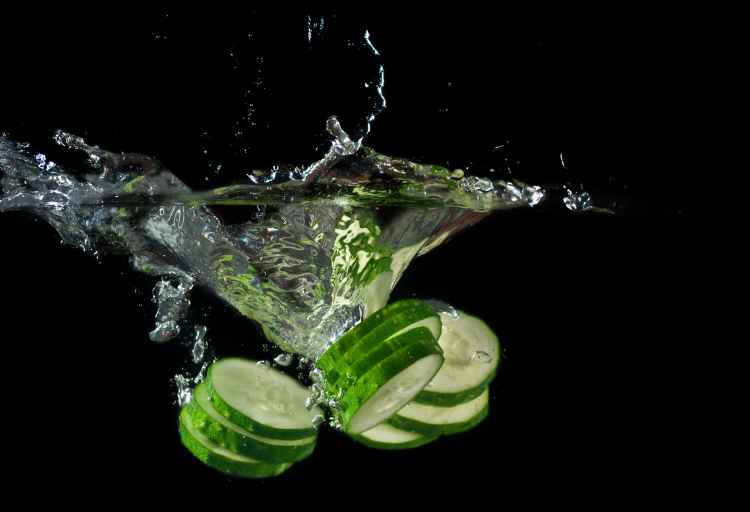Why Does My Mango Have Black Spots? Exploring Causes & Solutions
Mangoes are a beloved tropical fruit known for their sweet and juicy flavor. However, there are times when you might notice unsightly black spots on your mangoes, which can be concerning.
These black spots can affect the taste and overall quality of the fruit.
Why does my mango have black spots? Black spots on mangoes are typically caused by fungal or bacterial infections. Fungi like anthracnose thrive in warm, humid conditions, penetrating the skin and causing discoloration. Bacterial infections can enter through wounds. Proper handling, storage, and avoiding ethylene exposure can prevent these spots.

Contents
Why does my mango have black spots?
Black spots on mangoes are areas of discoloration that appear as dark, irregular patches on the fruit’s skin.
These spots can vary in size and intensity, ranging from small specks to larger patches that cover a significant portion of the mango’s surface.
The presence of black spots is not only a cosmetic issue but can also impact the fruit’s taste and texture.
Causes of Black Spots on Mangoes
Fungal Infections:
One of the primary reasons for black spots on mangoes is fungal infections. Fungi like anthracnose can thrive in humid and warm conditions, common in tropical regions where mangoes are grown. These fungi penetrate the fruit’s skin, causing dark lesions to develop.
Bacterial Infections:
Bacterial infections can also lead to the formation of black spots on mangoes.
Bacteria can enter through cracks or wounds in the fruit’s skin, and as they multiply, they cause discoloration and spoilage.
Physical Damage:
Bruising or any form of physical damage during harvesting, transportation, or handling can create openings in the mango’s skin.
These openings provide entry points for microorganisms, including fungi and bacteria, which can cause black spots to develop.
Ethylene Exposure:
Mangoes are sensitive to ethylene gas, which is released by certain fruits as they ripen.
If mangoes are stored alongside ethylene-producing fruits, it can lead to accelerated ripening and the development of black spots.
Preventing Black Spots on Mangoes
Proper Harvesting and Handling
Harvest mangoes carefully to avoid causing bruises or cuts on the fruit’s skin. Use sanitized tools and wear gloves to minimize the risk of introducing pathogens.
Handle the mangoes gently during transportation and storage.
Storage Conditions
Store mangoes in a cool, dry place with good ventilation. Avoid overcrowding, as it can lead to friction between fruits and cause physical damage.
Keep mangoes away from ethylene-producing fruits to prevent premature ripening.
Thorough Washing and Drying
Before consumption, wash mangoes thoroughly under running water. Gently scrub the surface to remove any dirt or potential contaminants.
After washing, allow the mangoes to air dry completely before storing or consuming them.
Addressing Black Spots on Mangoes
Isolation and Inspection
If you notice black spots on one mango, isolate it from the rest to prevent the spread of infection.
Thoroughly inspect other mangoes to ensure they are not affected. Promptly remove and dispose of any mangoes with extensive black spots.
Natural Remedies
Some natural remedies can help manage black spots on mangoes. A mixture of baking soda and water can be applied to the fruit’s surface to help control fungal growth.
Neem oil, known for its antifungal properties, can also be used as a preventive spray.
Fungicidal Treatments
For severe cases, consider using fungicidal treatments recommended for edible fruits. These treatments can help control fungal infections and prevent the further development of black spots.
However, be sure to follow the instructions carefully and adhere to recommended waiting periods before consuming treated mangoes.
Conclusion
While black spots on mangoes can be concerning, understanding their causes and implementing preventive measures can go a long way in preserving the quality of these delicious fruits.
Proper handling, storage, and care can significantly reduce the risk of fungal and bacterial infections that lead to black spots.
By following these guidelines, you can enjoy your mangoes at their best – juicy, flavorful, and free from unsightly spots.
FAQs
What causes black spots on mangoes?
Black spots on mangoes are often caused by fungal infections like anthracnose or bacterial infections. These microorganisms enter through wounds or cracks in the skin, resulting in discoloration.
Are black spots on mangoes harmful to eat?
In most cases, the black spots are cosmetic and don’t pose a health risk. However, they can indicate fungal or bacterial growth, affecting taste and texture. It’s best to avoid consuming heavily spotted areas.
How can I prevent black spots on my mangoes?
Proper handling during harvesting and storage is crucial. Keep mangoes dry, well-ventilated, and away from ethylene-producing fruits. Thoroughly wash and dry mangoes before consumption to minimize potential contaminants.
Can I remove black spots from mangoes?
You can cut away minor black spots, ensuring the flesh beneath appears healthy. However, extensive spotting might indicate deeper issues, and it’s advisable to discard severely affected mangoes.
Are there natural remedies to treat black spots on mangoes?
Yes, you can use a baking soda and water mixture or neem oil as preventive measures. These natural remedies have antifungal properties and can help control the growth of pathogens causing black spots.







